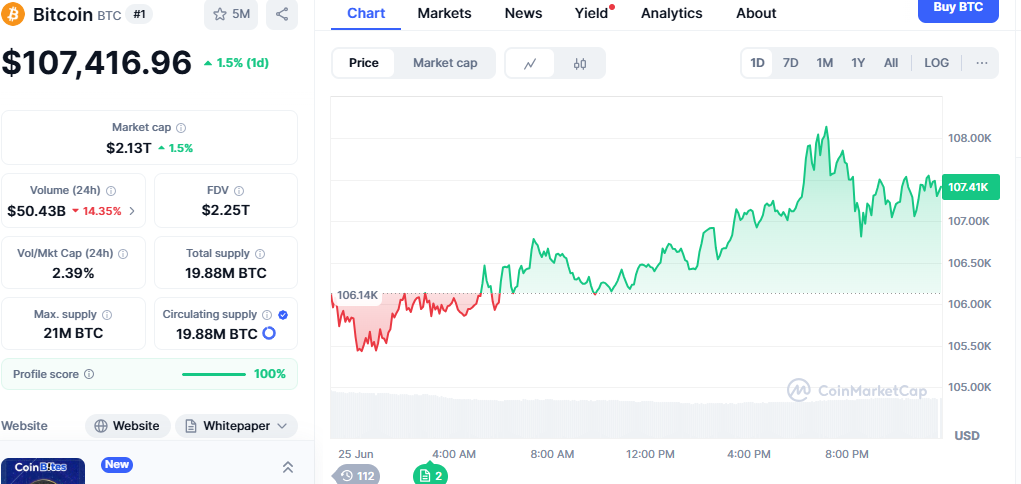Bitcoin Whale Accumulation Zones and Market Impact in 2025

The cryptocurrency market has witnessed unprecedented movements in 2024 and early 2025, with Bitcoin whales emerging as the dominant force shaping price action across major accumulation zones. These institutional investors and high-net-worth individuals control substantial portions of Bitcoin’s circulating supply, making their buying patterns crucial indicators for retail investors seeking to understand market dynamics.
Understanding where Bitcoin whales accumulate their holdings reveals critical insights into market psychology, technical analysis patterns, and the future trajectory of the world’s leading cryptocurrency. As Bitcoin continues to evolve from a speculative asset to an institutional reserve currency, whale behavior has become increasingly sophisticated and strategic.
Bitcoin Whale Behavior and Market Psychology
Bitcoin whales, defined as addresses holding 1,000 or more Bitcoin, represent less than 3% of all Bitcoin addresses yet control approximately 42% of the total circulating supply. These entities include institutional investors such as MicroStrategy, Tesla, and El Salvador’s national reserves, alongside private wealth funds and early cryptocurrency adopters who accumulated significant positions during Bitcoin’s early years.
The accumulation strategies employed by these large holders differ fundamentally from retail trading patterns. Whales typically execute their purchases during periods of maximum fear, uncertainty, and doubt, when retail investors are capitulating and selling their positions. This contrarian approach allows them to acquire substantial amounts of Bitcoin at favorable prices while minimizing market impact through sophisticated order execution techniques.
Michael Saylor’s MicroStrategy exemplifies this strategic approach, having accumulated over 190,000 Bitcoin through dollar-cost averaging during both bull and bear market conditions. The company’s transparent accumulation strategy has provided valuable insights into institutional thinking regarding Bitcoin’s long-term value proposition and adoption trajectory.
Key Accumulation Zones Throughout Bitcoin’s History
Historical analysis reveals several distinct accumulation zones where whale activity intensified significantly. The $15,000 to $20,000 range during the 2022 bear market represented one of the most significant accumulation periods in Bitcoin’s history, with on-chain data showing consistent whale purchases despite widespread negative sentiment surrounding the FTX collapse and broader cryptocurrency market turmoil.

The $25,000 to $30,000 zone emerged as another critical accumulation area during early 2023, as whales recognised the oversold conditions following the banking crisis that affected Silicon Valley Bank and Credit Suisse. Institutional investors viewed these macroeconomic uncertainties as validation of Bitcoin’s thesis as a hedge against traditional financial system risks.
More recently, the $40,000 to $45,000 range has exhibited substantial whale activity, particularly following the Securities and Exchange Commission’s approval of Bitcoin exchange-traded funds in January 2024. This regulatory milestone opened institutional floodgates, with firms like BlackRock and Fidelity launching Bitcoin ETFs that now collectively hold hundreds of thousands of Bitcoins.
Technical Analysis Indicators for Whale Accumulation
Professional traders and analysts utilise several sophisticated metrics to identify whale accumulation zones before they become apparent to retail investors. The Network Value to Transactions ratio serves as a primary indicator, measuring Bitcoin’s market capitalisation relative to transaction volume. When this ratio reaches historically low levels, it often coincides with periods of intense whale accumulation.
Exchange outflows represent another critical metric for identifying whale buying pressure. When large amounts of Bitcoin are transferred from centralised exchanges to private wallets, it typically indicates long-term accumulation rather than short-term trading activity. Glassnode and Chainalysis provide detailed analytics showing these flows, revealing patterns that precede significant price movements.
The Spent Output Profit Ratio analyzes the profit or loss of Bitcoin being moved on-chain, helping to identify capitulation events where retail investors sell at a loss while whales accumulate. During the Terra Luna collapse in May 2022, SOPR data showed extensive retail capitulation coinciding with increased whale accumulation activity.
Current Market Conditions and Whale Activity
As of early 2025, whale accumulation patterns suggest a strategic shift toward viewing Bitcoin as a permanent treasury asset rather than a speculative investment. The adoption of Bitcoin by sovereign wealth funds, following El Salvador’s pioneering approach, has created a new category of ultra-long-term holders who view Bitcoin accumulation as essential for monetary sovereignty.

Recent on-chain analysis suggests that whales have been accumulating aggressively during periods of price weakness below $50,000, viewing these levels as generational buying opportunities. The correlation between traditional market volatility and Bitcoin whale buying has strengthened significantly, with institutional investors increasingly viewing cryptocurrency market downturns as optimal entry points.
The emergence of Bitcoin layer-two solutions, such as the Lightning Network, has also influenced whale accumulation strategies. Some large holders have moved portions of their Bitcoin to these scaling solutions to generate yield while maintaining exposure to Bitcoin’s price appreciation.
Geographic and Regulatory Influences on Whale Behavior
Regulatory developments across major jurisdictions continue to shape whale accumulation patterns significantly. The European Union’s Markets in Crypto-Assets regulation, as well as similar frameworks in Singapore and Hong Kong, have provided institutional clarity that encourages large-scale Bitcoin accumulation by previously hesitant traditional finance institutions.
Geopolitical tensions and concerns about currency devaluation have accelerated whale accumulation in regions experiencing monetary instability. Wealthy individuals and family offices in countries facing inflation or capital controls are increasingly viewing Bitcoin as essential portfolio diversification, driving sustained accumulation despite short-term price fluctuations.
The United States remains the dominant region for institutional Bitcoin accumulation, with publicly traded companies collectively holding over 300,000 Bitcoin. This trend has created a feedback loop where corporate Bitcoin adoption encourages additional institutional participation, further solidifying accumulation zones around psychologically significant price levels.
Future Implications and Investment Strategies
The evolving whale accumulation landscape suggests that future Bitcoin price discovery will increasingly depend on institutional demand rather than retail speculation. This fundamental shift requires retail investors to adapt their strategies, focusing on dollar-cost averaging during periods of whale accumulation rather than attempting to time short-term price movements.
Smart money continues to flow into Bitcoin infrastructure development, with venture capital firms investing billions in companies that build cryptocurrency custody solutions, trading platforms, and financial services. This infrastructure development supports the thesis that current accumulation zones represent early positioning for mainstream Bitcoin adoption over the coming decade.
The potential approval of Bitcoin strategic reserves by major governments could create unprecedented demand that dwarfs current whale accumulation levels. Several U.S. states have introduced legislation proposing Bitcoin allocations for pension funds and treasury reserves, which could trigger a new paradigm in cryptocurrency accumulation strategies.
Following Whale Strategies
While whale accumulation zones provide valuable market insights, retail investors must understand the risks associated with mimicking institutional strategies. Whales possess substantially longer investment horizons and greater risk tolerance than typical retail investors, allowing them to withstand extended periods of price volatility without forced selling pressure.
Liquidity considerations also differ dramatically between whale and retail positions. Large Bitcoin holders often utilize over-the-counter markets and institutional custody solutions, which offer different risk profiles compared to retail exchange trading. Understanding these structural differences helps inform appropriate position sizing and risk management approaches.
The concentration risk associated with following whale accumulation strategies requires careful consideration of portfolio diversification principles. While Bitcoin has demonstrated strong long-term performance, allocating excessive portfolio percentages based solely on whale behaviour can expose investors to significant volatility and potential losses.
Technological Tools for Tracking Whale Activity
Modern blockchain analytics platforms provide unprecedented visibility into whale accumulation patterns through sophisticated on-chain analysis tools. Platforms like Santiment, IntoTheBlock, and CryptoQuant offer real-time tracking of large Bitcoin transactions, exchange flows, and accumulation trends that were previously impossible to monitor.
These analytical tools have democratized access to whale tracking capabilities, allowing retail investors to observe institutional accumulation patterns in near real-time. However, interpreting this data requires an understanding of blockchain forensics principles and the ability to distinguish between genuine accumulation and market manipulation tactics.
Artificial intelligence and machine learning applications are increasingly used to identify whale accumulation zones by analyzing complex patterns across multiple data sources simultaneously. These technological advances promise to make whale behavior tracking more accessible and accurate for investors seeking to understand the dynamics of the Bitcoin market.
